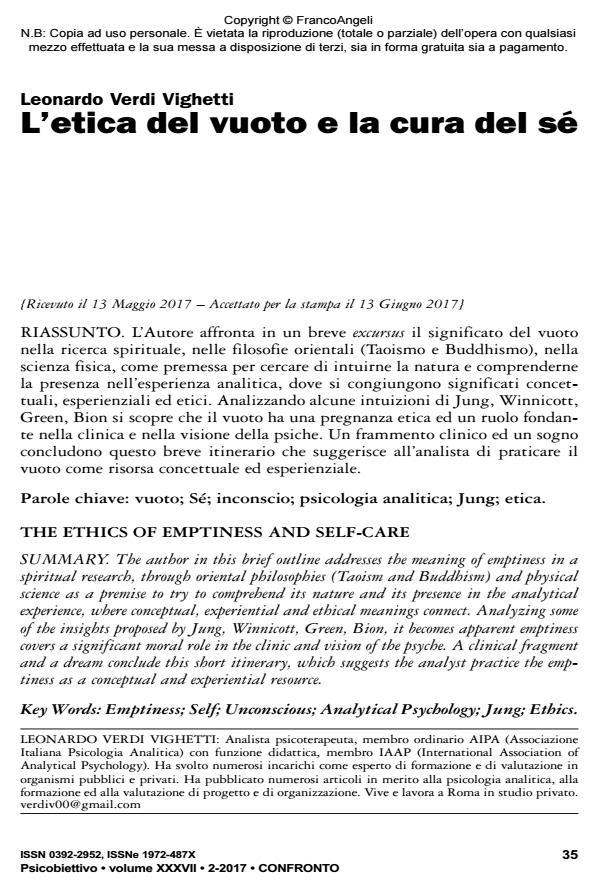The ethics of emptiness and self-care
Journal title PSICOBIETTIVO
Author/s Leonardo Verdi Vighetti
Publishing Year 2017 Issue 2017/2
Language Italian Pages 19 P. 35-53 File size 125 KB
DOI 10.3280/PSOB2017-002003
DOI is like a bar code for intellectual property: to have more infomation
click here
Below, you can see the article first page
If you want to buy this article in PDF format, you can do it, following the instructions to buy download credits

FrancoAngeli is member of Publishers International Linking Association, Inc (PILA), a not-for-profit association which run the CrossRef service enabling links to and from online scholarly content.
The author in this brief outline addresses the meaning of emptiness in a spiritual research, through oriental philosophies (Taoism and Buddhism) and physical science as a premise to try to comprehend its nature and its presence in the analytical experience, where conceptual, experiential and ethical meanings connect. Analyzing some of the insights proposed by Jung, Winnicott, Green, Bion, it becomes apparent emptiness covers a significant moral role in the clinic and vision of the psyche. A clinical fragment and a dream conclude this short itinerary, which suggests the analyst practice the emptiness as a conceptual and experiential resource.
Keywords: Emptiness; Self; Unconscious; Analytical Psychology; Jung; Ethics.
- Proceedings of the 3rd International and Interdisciplinary Conference on Image and Imagination Elisabetta Villano, pp.341 (ISBN:978-3-031-25905-0)
Leonardo Verdi Vighetti, L’etica del vuoto e la cura del sé in "PSICOBIETTIVO" 2/2017, pp 35-53, DOI: 10.3280/PSOB2017-002003